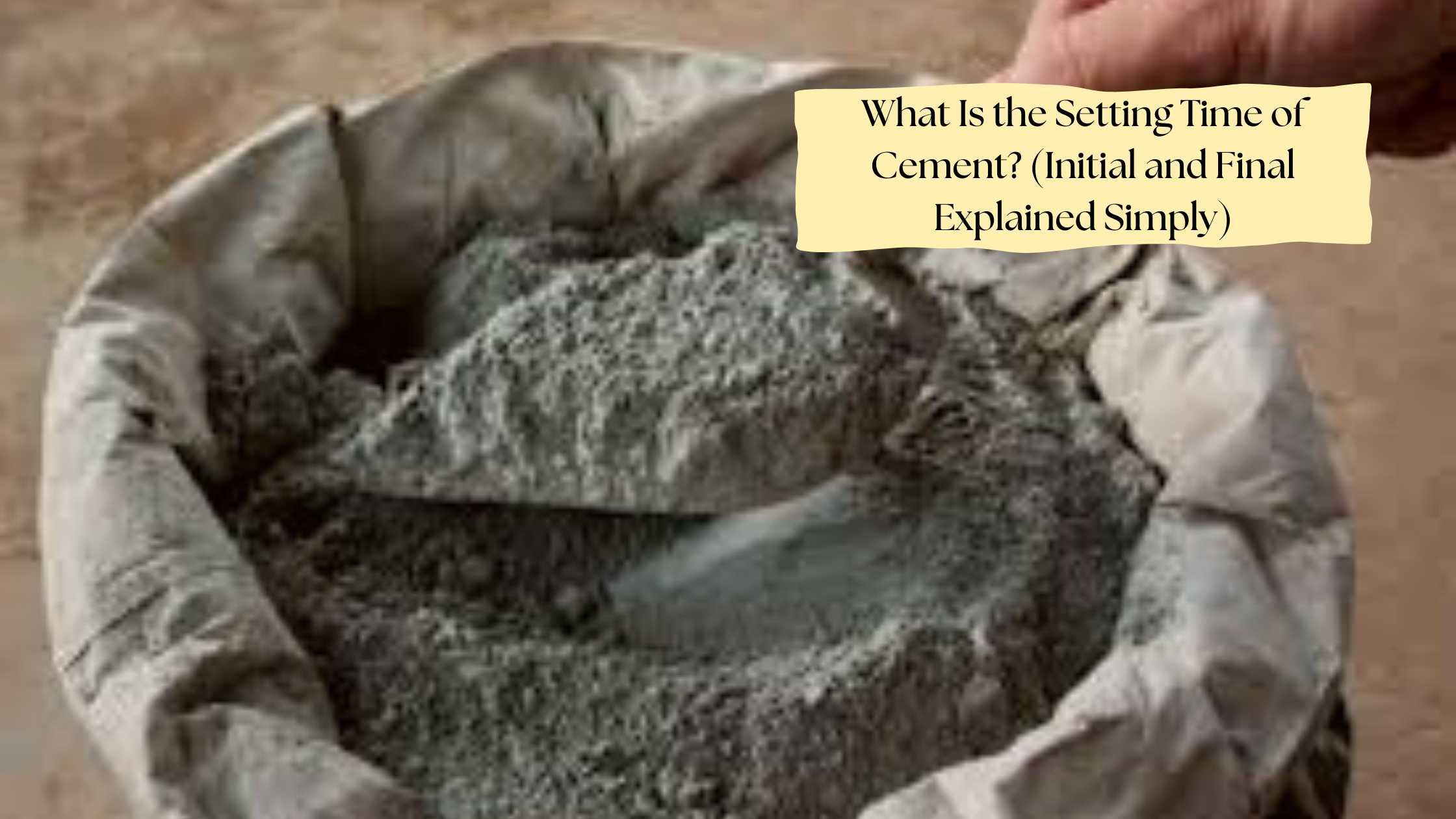Have you ever wondered how concrete turns into solid floors, strong walls, or those huge bridges we cross daily? The answer is hidden in something known as the setting time of cement.
If you’ve heard terms like “initial setting time” and “final setting time” thrown around on a construction site—or even while renovating your home—but weren’t quite sure what they meant, this blog’s for you.
Let’s make it simple, relatable, and clear.
What Does “Setting Time” of Cement Actually Mean?
In simple words, the setting time of cement is the duration that the cement paste takes to begin hardening once it is exposed to water.
- Initial Setting Time is the time during which the cement begins to harden—i.e., when it becomes a semi-solid from a fluid mix.
- Final setting time is the time at which the cement becomes completely solid and cannot be shaped further.
Knowing both is important in construction since it helps to ascertain how much time laborers have to put in, level, and complete the mixture before hardening begins.
What is cement’s setting time?
As per IS Code (IS 4031 & IS 269):
- Initial Setting Time: Not less than 30 minutes
- Final Setting Time: Not more than 10 hours
These timings may differ slightly depending upon the cement type, weather, and mix design, but these standards guarantee quality and workability.
Let’s Use a Real-Life Example
You’re installing cement for your home’s floor. The instant you blend the cement with water, a chemical reaction is initiated. That mix begins as runny and smooth—but won’t remain so for long.
You have about 30 minutes (first setting time) to pour and form it. Once this is past, the surface begins to get hard.
After about 10 hours, the cement is set hard. That is the last setting time.
If you wait too long or work after the initial setting time, the cement can crack, become weaker, or fail to bond correctly—a huge no-no for structural applications.
Why Setting Time Is Important in Construction
Understanding how quickly or slowly cement sets assists in:
- Scheduling work calendars
- Preventing cold joints (concrete gaps due to late pouring)
- Achieving strength and durability
- Efficient management of labor and equipment
During hot weather, the time taken to set decreases, while during cold weather, it increases. Constructors tend to adjust with additives to accelerate or decelerate depending on the situation.
What influences the setting time of cement?
- Water-Cement Ratio
Too much water? It sets slower. Too little? It becomes unusable.
- Temperature
Greater temperatures = quicker setting. Lower temperatures = slower response.
- Type of Cement
OPC (ordinary Portland cement), PPC (Portland pozzolana), and others are all different.
- Admixtures or Additives
Chemicals can be incorporated to speed up or retard setting depending on project requirements.
What People Typically Search for Online
People generally query:
- What is the initial and final setting time of cement?
- Why is setting time significant?
- How to increase/decrease cement setting time?
- Which cement has the fastest setting time?
- What’s the difference between setting and hardening?
These questions show just how important this topic is for everyone—from DIYers to site engineers.
Quick Tip for Home Builders
If you’re building a house and using cement-based materials:
- Make sure your mason or contractor doesn’t delay the placement after mixing
- Always inquire whether they are working with freshly mixed cement and if the weather has been taken into consideration
- Don’t work with cement that has been sitting for too long—it becomes weak
Last Word: Timing Is Critical
With construction, seconds matter—particularly with cement.
Knowing the initial and final setting time provides you with more control over the quality and longevity of your building.
So, whether you’re constructing a wall, roof, or a whole house—show some respect for the clock. Cement does not wait.

